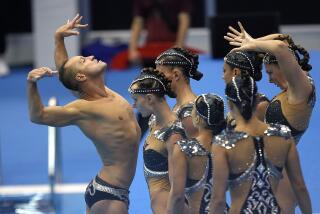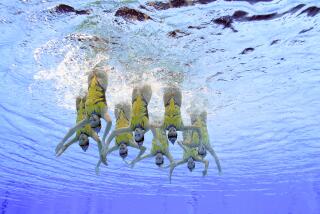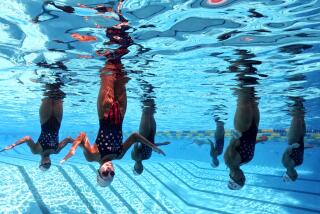Science in the swim
Back when Nike was a goddess and not something to put on your feet, Olympic runners raced barefoot. What a difference a few millenniums make. Today’s runners, with the rare exception of, say, a Zola Budd, wear shoes hyper-designed to cushion heel strike, improve toe-off and minimize flex, all in ultra-lightweight materials. That’s not to mention the training regimens, physical therapists and bouncier tracks.
As international sporting events test the ever-closer limits of human performance, science and engineering have become as much a part of the winning formula as the human. So why the fuss about high-tech swimsuits?
FINA, the international governing body of swimming, last week banned the full-body suits that streamline the physique and repel water to make for a more seal-like plunge through the pool. Chalk up one for the old school, unlike sports that have embraced new technology.
Advances in baseball bat design have lightened the bat while enhancing the sweet spot. Pro bicycles feature carbon-fiber frames and index shifting; riders are aerodynamically outfitted down to their sunglasses. Golf clubs have bigger heads and springier shafts, and the rubber cores of golf balls have been replaced with materials designed to maximize flight.
In judging the advantages that science brings to our physical endeavors, the governing bodies of sports must consider two questions: Is it fair, meaning reasonably accessible to most world-class athletes? And is it safe? Steroids are damaging not just to star athletes but to the ambitious youngsters who follow their example.
A third factor was at play in the FINA decision: the speed with which the polyurethane-laced suits can make records of just a few years ago look like quaint relics of an ancient era. New records have been set practically by the hour this week at the world championships in Italy.
But short of a swimsuit fitted with motorized propellers, or high-jump shoes soled with rocket boosters, there’s little reason to reject improved design and materials based on skittishness about the records set and broken in seemingly less time than the 20 minutes it takes to don one of the new swimsuits. Fans like to compare performances of the past with those of the present. Who’s the greater golfer, Tiger Woods or Arnold Palmer? Sporting events should be a contest among athletes, not between current athletes and the ghosts of athletes past.
The ancient Greeks ran barefoot -- and naked, for that matter -- in celebration of the human physique’s possibilities. In the era of high-tech sports, we recognize that although human athletic performance has limits, human ingenuity doesn’t.
More to Read
Go beyond the scoreboard
Get the latest on L.A.'s teams in the daily Sports Report newsletter.
You may occasionally receive promotional content from the Los Angeles Times.






